The global crisis in the collapse of insect populations is especially worrisome with respect to pollinators. Honey bees were particularly recognized as suffering, and “Colony Collapse Disorder” was named to characterize the sudden disappearance of managed honey bees from their nest boxes. Mortality rates remain high, with bee keepers losing about half their colonies each year in Pennsylvania.
Insect pollinators are responsible for most of the fruits and vegetables we eat, representing about one bite in three from your dinner plate. Pollinators play a role worth about $24billion in economic terms for agriculture (and a greater, unassessed value for the ecosystem in general). The Congressional Pollinator Protection Caucus was formed to address concerns over the situation, and grassroots programs sprang up all over the country to encourage pollinator friendly decision-making. The important issues here are complex, sometimes political, and the enthusiasm of activists sometimes drowns out more carefully considered advice.
Here, I provide a brief update and some perspective on the issue. I am a career entomologist, a “hymenopterist,” meaning a specialist on ants, bees, and wasps. I am not a honey bee keeper, nor do I have any connection to industry or government offices connected to the pollinator crisis. Keep in mind that scientific perspectives change with new information, and there is no Oracle of Truth.
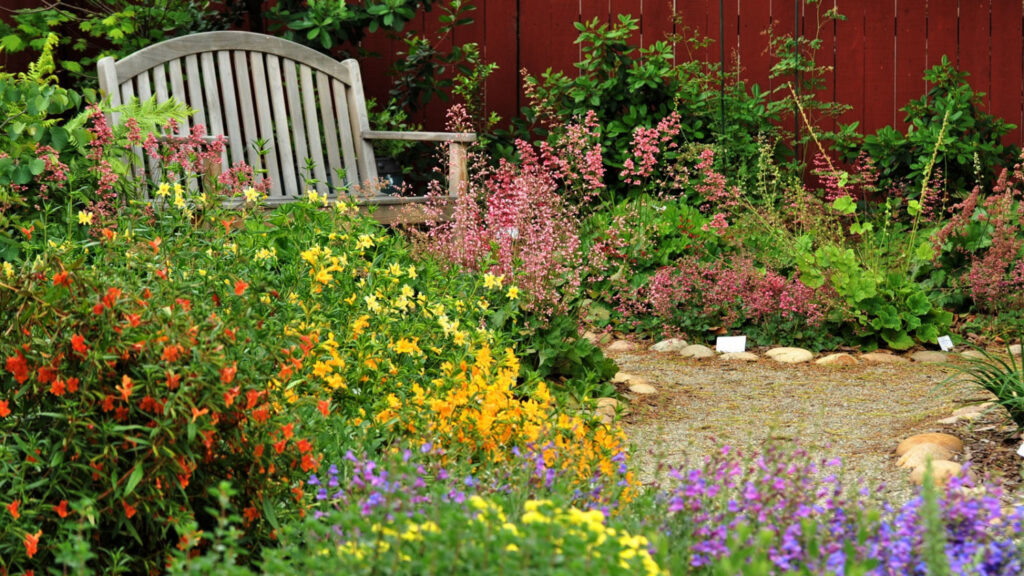
Who are our pollinators?
There are hundreds of species of native bees in Pennsylvania. Most people know about bumble bees, some know about sweat bees, but nearly all other species are unknown the public. These wild bees are not managed for agriculture. Usually, they live out their lives in burrows in the ground where each female digs her own nest and provides pollen to her offspring who emerge next year, dig their own nests, and start the cycle again. Such bees often live among us and may be the main pollinators of major crops (such as tomatoes, cucumbers and squashes, blue berries, peaches), going on about their lives without interference from humans. These solitary bees are not aggressive and pose no threat to people. They should not be confused with ground-nesting colonies of yellowjackets, which are aggressive predatory wasps and not significant pollinators
Honey bees are the most important managed pollinators. They have been in domestication (“apiculture”) for thousands of years and were brought to the Americas by Europeans. Commercial honey bee managers are critical to many crops, bringing their bees to the farm just at the right time to pollinate the crop, then moving on to another crop elsewhere. Honey bees are not necessarily the best pollinators, but they can increase yield in a field where native bees are also active. Apples may be an example of this: native bees pollinate well, but a few colonies of honey bees (at 50,000 bees per colony) will increase your yield.
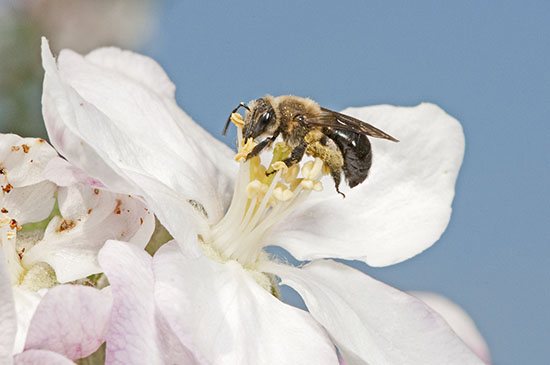
For all the enthusiasm the public has for butterflies or birds as pollinators, they are largely inconsequential in the larger scheme of things. Very few plants actually require visits from such animals: even milkweeds reproduce perfectly well without their beloved monarch butterflies. But because people like close encounters with butterflies more than they like being amid bees, promoting gardens as good places for butterflies is an effective way to get the public to embrace pollinator-friendly plantings.
The most under-valued pollinators are probably the flies. Flies are everywhere, they come out in early spring before bees, and fly in late autum, they will go to all kinds of resources, and they can be good pollinators by bashing around in a flower for a little nectar. Many flowers that are white, have short open corollas, and have a musky odor may be pollinated principally by flies. Consider the enormous display of a wild black cherry tree, perhaps hundreds of thousands of flowers. I doubt there are enough wild bees in flying distance of a big cherry to pollinate all the flowers.
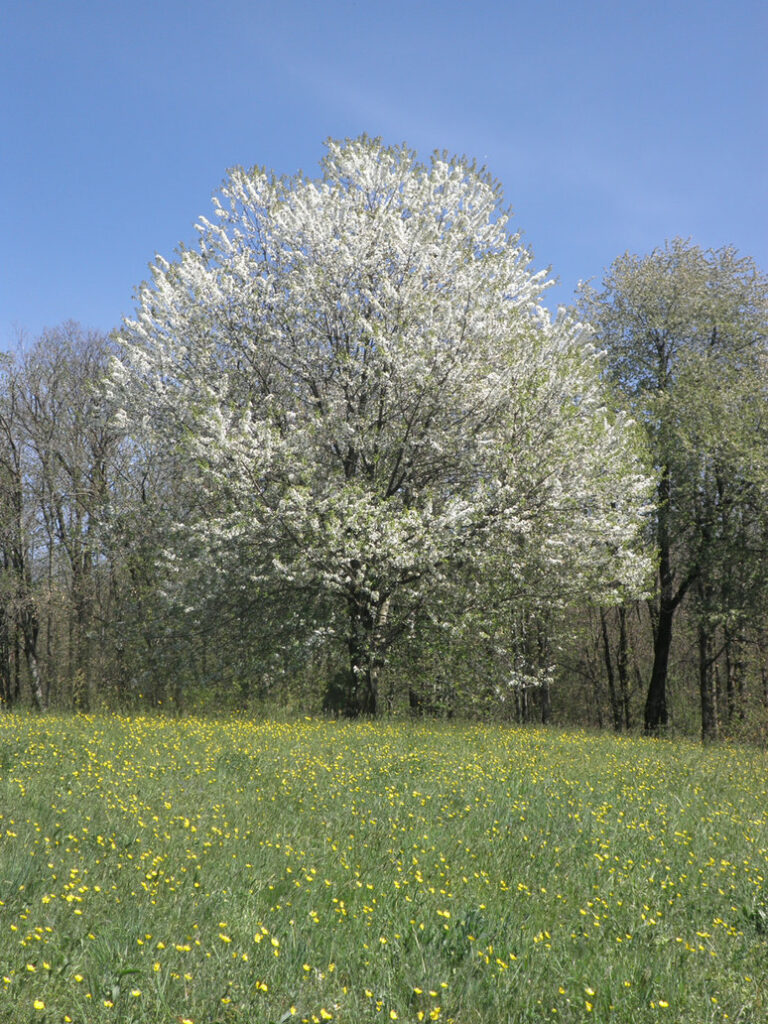
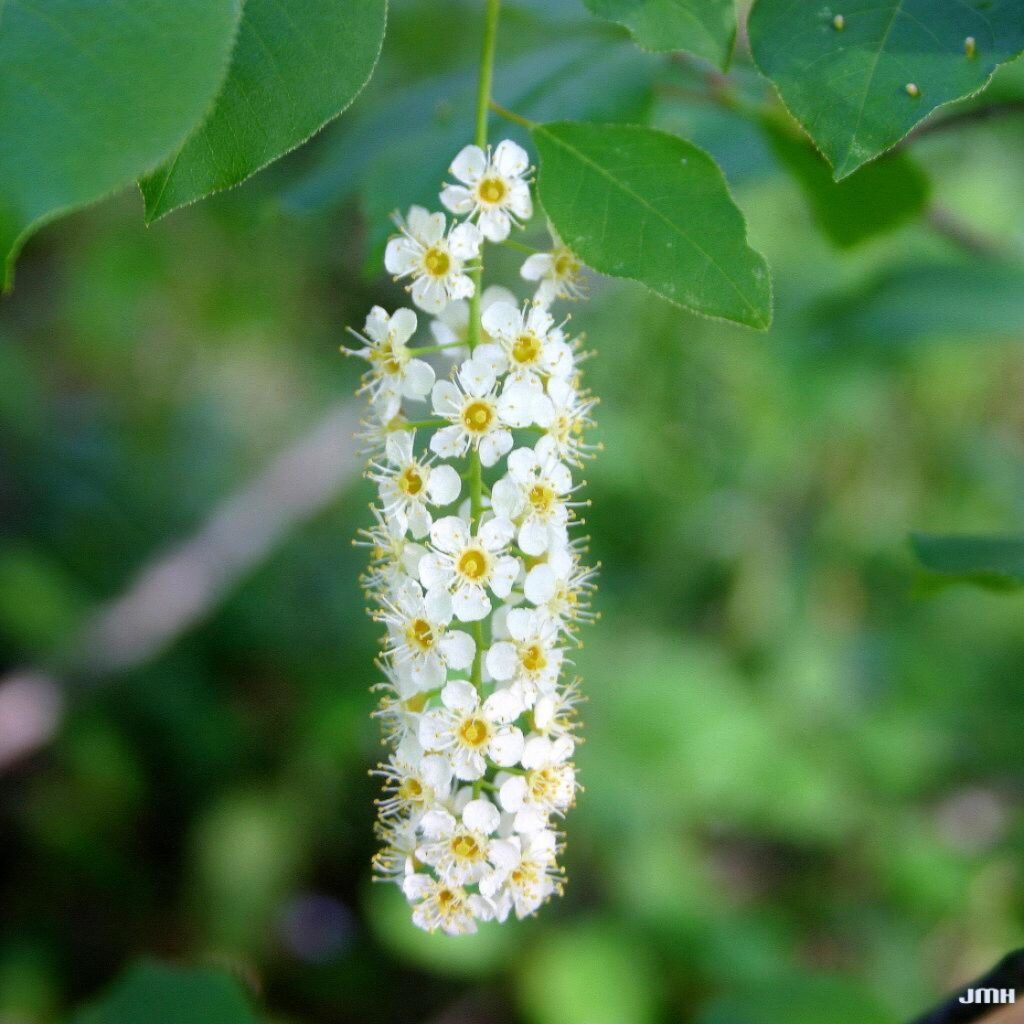
Landscape-level issues.
The world we live in today is greatly modified by humans. Most people anticipate that use of insecticites and urban sprawl are detrimental to pollinators, but it is deeper than that. Road maintenance that involves mowing or use of herbicides to control roadside weeds destroys millions of flowers throughout the season even in a small town. Maintaining lawns, stabilizing eroding banks, paving great expanses of the surface all reduce a wild bee’s opportunity to dig a burrow in a favorable location. The garden industry now promotes horticultural varieties that may have large, profuse, and long-blooming flowers, but these are often sterile. They can be attractive decoys, drawing bees to explore them, but offering no reward. Flower beds with such plantings are not beneficial to pollinators, no matter how beautiful they are to us.
Recently, we discovered that bees can easily pick up debilitating viruses from each other at flowers, meaning that as the choices of where to forage decreases, disease transmission increases. Some diseases have now been introduced from other parts of the world, and our bees have little resistance to them. They have their own versions of the COVID pandemic.
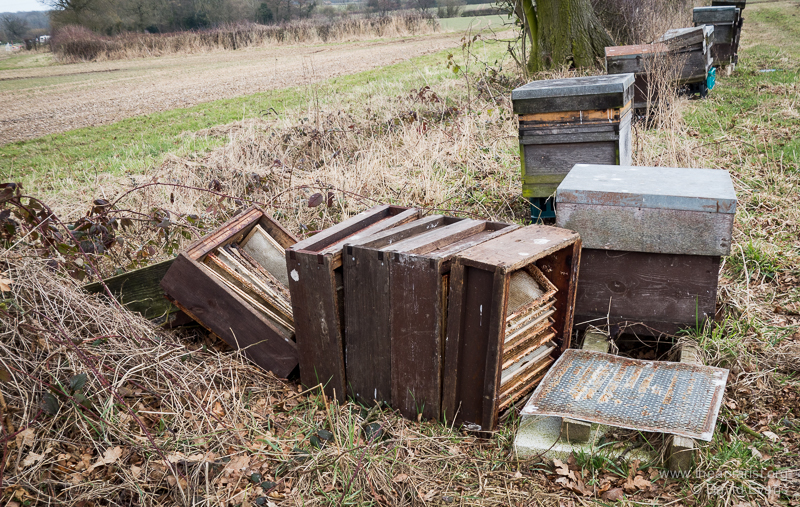
Honey Bee Colony Collapse Disorder.
This pathological condition is characterized by having apparently healthy honey bees in the apiary nesting boxes, then suddenly they are gone. There is no accumulation of dead bees to be found near the hive, nor were there swarms of bees departing the hive for a new home elsewhere. Still poorly understood, there appear to be a number of factors that stress the bees until the colony fails catastrophically. For honey bees, in addition to some of the challenges mentioned above, insecticides can play a heavy role because different foragers return from different areas carrying home a little of whatever insecticide was used there. It is now possible to isolate from the wax of a typical bee hive as many as 100 different insecticides that accumulated there from returning foragers. This is critical because the physiological stress produced by a cocktail of different toxins in low dosage is often worse than the same volume of just one toxin. In addition, the family of insecticides called neonicotinoids (see below) causes disorientation in doses that are not enough to kill the bees. They no longer navigate well, failing to find their way back to the hive. This may partly explain what happened to the disappearing bees. Gradual accumulation of neonicotinoids in the colony could reach a tipping point where bees leave the colony and never come back.
Insecticides per se.
Certain devastating insecticides, such as DDT, have been banned because of the grave ecological damage they caused across a wide spectrum of animals that were not their original targets. But banning insecticides is not always the answer. Our application of insecticides is often reckless and excessive, in which case we are more to blame than chemistry itself. Consider that the average American suburban homeowner uses uses about 10 times as much environmental toxins (including insecticides, herbicides, certain fertilizers) around his property per acre than does the average farmer. For a farmer, the financial and labor issues of spraying a field create an economic reason not to over-do it, but the home owner rarely concerns himself with that, he just wants to exterminate whatever bothers him.
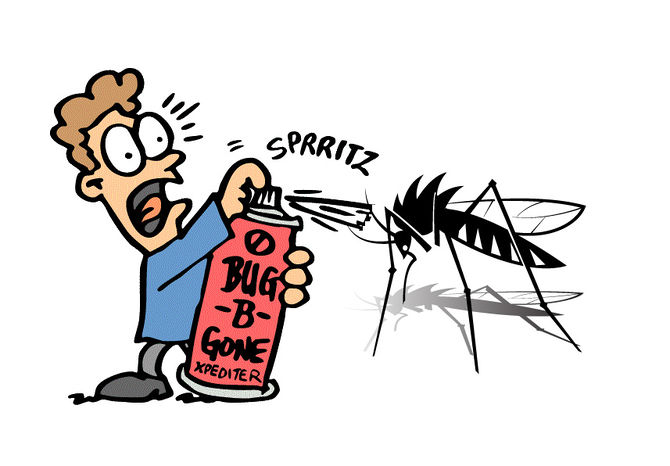
While I generally oppose use of insecticides, carefully regulating them rather than advocating prohibition is the likely solution to overuse. Neonicotinoid insecticides present a good example in this regard. These compounds are new (“neo”) synthetic mimics of nicotine (“nicotin-oid”), sometimes called “neonics” for short. Nerves of insects and vertebrates are very different, and nicotine acts as a nerve poison to insects and a stimulant for vertebrates (toxicity of tobacco for us is due to the tar, not the nicotine). Among modern insecticides, neonicotinoids are among the most lethal to insects and the least for vertebrates. In this sense, they are better than anything we used before. But, with that fact bolstering our confidence, they are far too available. Anyone can buy a good amount of “Imidocloprine” or other neonic in the convenience store or grocery. You are encouraged to spray them on your dog to kill ticks and fleas. Recall that suburban homeowners tend to over-use poisons. Add to this the fact that neonics decay slowly in the environment, one estimate from California being that it takes about four years for concentrations to decay to half the original. It is easy to see how casual use can overload any system. Gross over-use of neonics has caused a lot of problems, and these compounds are the cause of legitimate, deep concern. The first thing we should do is severely regulate and restrict use. You should not be able to buy spray cans in the grocery and fill your world with neonics. Yet, if we ban them entirely, then everyone will go back to using the previous generation of compounds, none of which were as effective against insects and safe for vertebrates as the neonics.
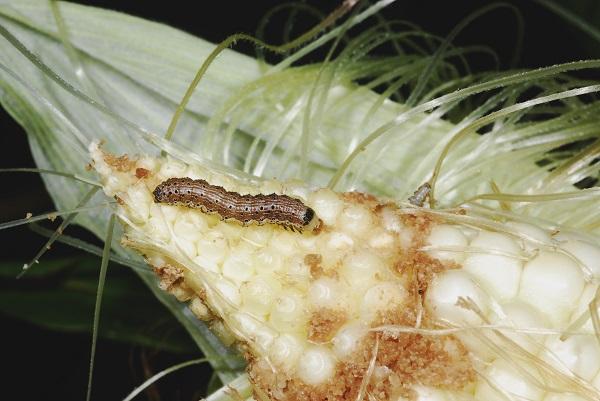
Nonetheless, we need effective chemical insecticides. Consider that the crops we grow and the lifestyle we enjoy are not possible without them. No one will passively let termites destroy their house if they can prevent it. Few people would buy (and many could not afford) certain favored vegetables if they cost ten times as much as they do today because so much of the crop is regularly destroyed by insects. Let’s use the best insecticides we have, judiciously. They should be treated more like prescription drugs than like just another commodity.
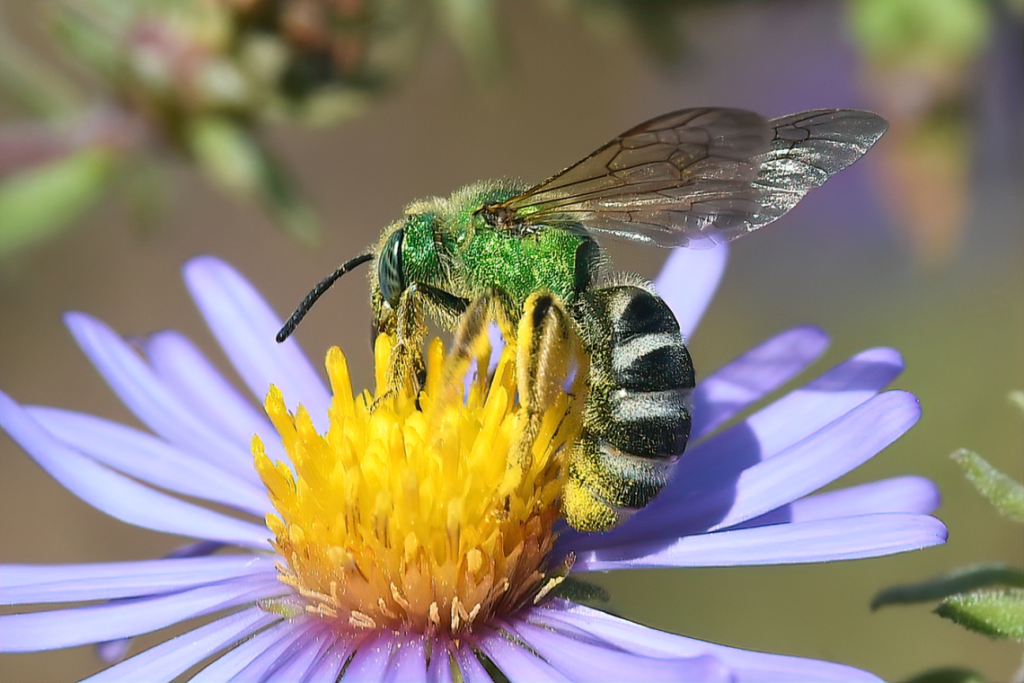
What can you do?
There are a lot of simple things we can do that would improve the situation greatly if the practice was widespread. Plant native plants; don’t use sterile plants; leave patches of rough area where weeds grow all year; leave some bare earth or unmodified soils for nesting areas. Tolerate nesting bees even if their coming-and-going seems like a nuissance for a couple of weeks. Use the least necessary chemicals to intervene when shaping your own environment. Consult authorities such as Xerces Society for more information.
